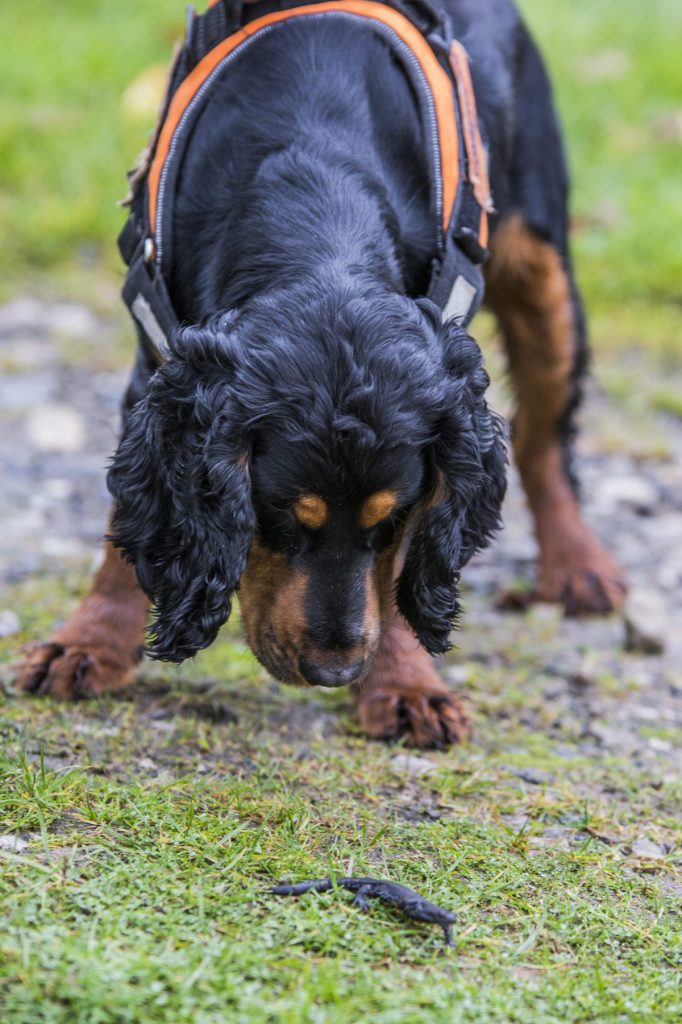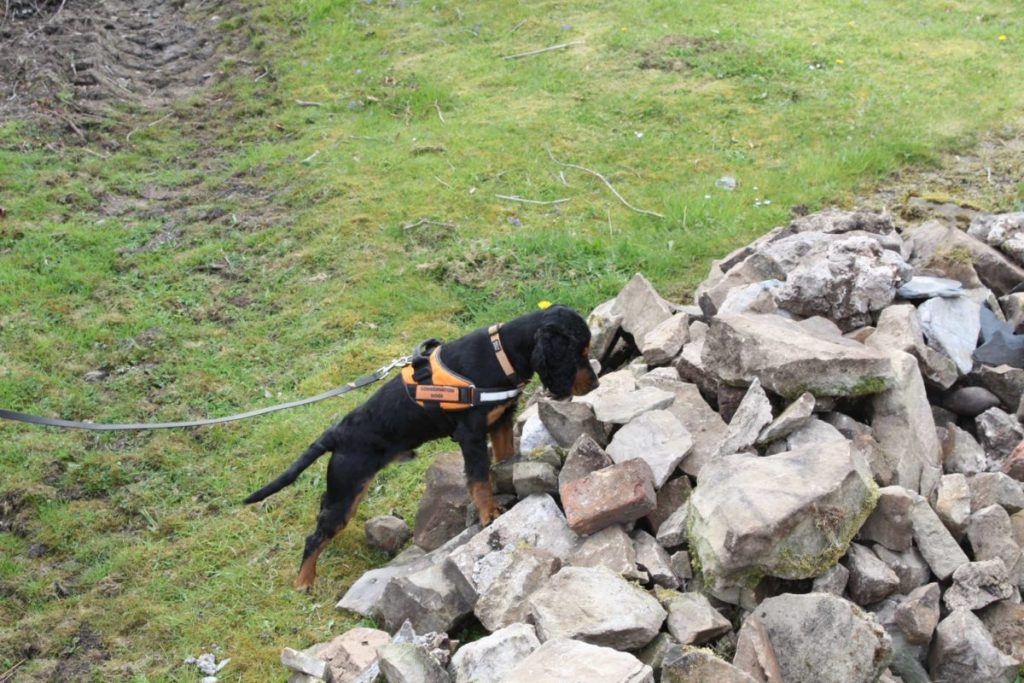‘Rocky’, a five year old cocker spaniel, has been named the world’s first scientifically proven great crested newt detection dog.
Sniffer dog Rocky is part of a team of Conservation Dogs at Wagtail UK, based in North Wales.
Great crested newts are a European protected species. The animals and their eggs, breeding sites and resting places are protected by law. However, finding and relocating this elusive species can be difficult. This can cause huge challenges for major infrastructure projects.
Detection dog specialists Wagtail UK have developed a safe, efficient and accurate search method to detect live great crested newts using a sniffer dog.
Following extensive scientific testing over an 18-month period by Atkins Global on behalf of HS2, Wagtail UK Ltd are proud to announce that sniffer dog Rocky successfully passed all testing and is the first scientifically proven detection dog to detect the great crested newts.
No other dogs have undergone the pioneering testing which scientifically proves that Rocky can detect the great crested newt scent.

Rocky the sniffer dog ‘indicates’ the presence of a great crested newt with a passive response, i.e. he does not touch the great crested newt in any way and will sit/stand and stare to alert the handler of the presence of the great crested newt. Rocky has been trained to ignore smooth newts and frogs as they are not protected in the same way as great crested newts.
The use of a sniffer dog means larger areas of land are covered faster with greater accuracy, in a more cost effective and non-evasive manner. Without a trained sniffer dog all suitable areas would have to be laboriously searched by hand.
There has been a growing interest in the use of detection dogs for ecological surveys in the UK. Currently, however, there is no standard methodology for testing and accreditation of dog and handler teams.
Wagtail great crested newt detection dog Rocky and his handler were approached by Atkins (on behalf of HS2) to take part in a research project to assess the potential of detection dogs to locate great crested newts (GCN). A rigorous testing method was employed to determine whether dog/handler teams could reliably distinguish GCN scent from other UK amphibians, and locate GCN in the natural environment.

There were two parts to the testing: an initial controlled test to assess the ability of a dog to detect unfamiliar great crested newt scent (ie not using the great crested newt the dog was trained on), and field trials to assess whether a dog can reliably locate great crested newt individuals in habitat searches.
Collin Singer, Managing Director at Wagtail UK commented: “This work highlights the innovative manner in which dogs can be used in conservation and to assist with ecological surveys. Four years of research, painstaking trial and error – and now success has produced a brand new, innovative method of detection dog training by Wagtail UK and Conservation Dogs to find great crested newts.”
Collin added: “We’re also excited to announce that, using the same pioneering methods developed by Wagtail and Conservation Dogs, our amazing GCN detection dog Arnie has reached the same standards that Rocky and is now working as a fully operational Great Crested Newt Detection Dog.”
It is hoped that the testing by Atkins and subsequent paper will result in the formation of standard methodologies and an accreditation system to ensure consistently high standards relating to the use of great crested newt detection dogs.
If you require any further information please call 01745 561166 or email info@conservationdogs.com



